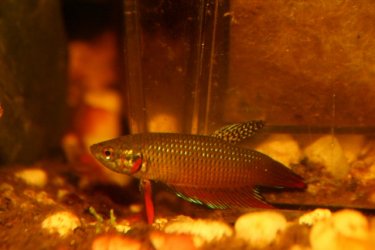No sadly it's not true, in nature even if the fish lives in a puddle of dirty water. with poor oxygen... They are filled with all the bacteria and organism that breaks down ammonia and all other toxins known to affect fish.
Bettas are not the slightest more resistant to ammonia than other fishes. It will burns their gills and damages their internal organs, even though they can supplement their oxygen intake through their labyrinth organ.
I believe Johnny is pretty much aware of temperatures required and probably have a room dedicated already.
If I remember his My BBS, Daphnia/Moina and Green Water Culture System Looked like a Lab installation.
I can imagine the rest.
Bettas are not the slightest more resistant to ammonia than other fishes. It will burns their gills and damages their internal organs, even though they can supplement their oxygen intake through their labyrinth organ.
I believe Johnny is pretty much aware of temperatures required and probably have a room dedicated already.
If I remember his My BBS, Daphnia/Moina and Green Water Culture System Looked like a Lab installation.
I can imagine the rest.


